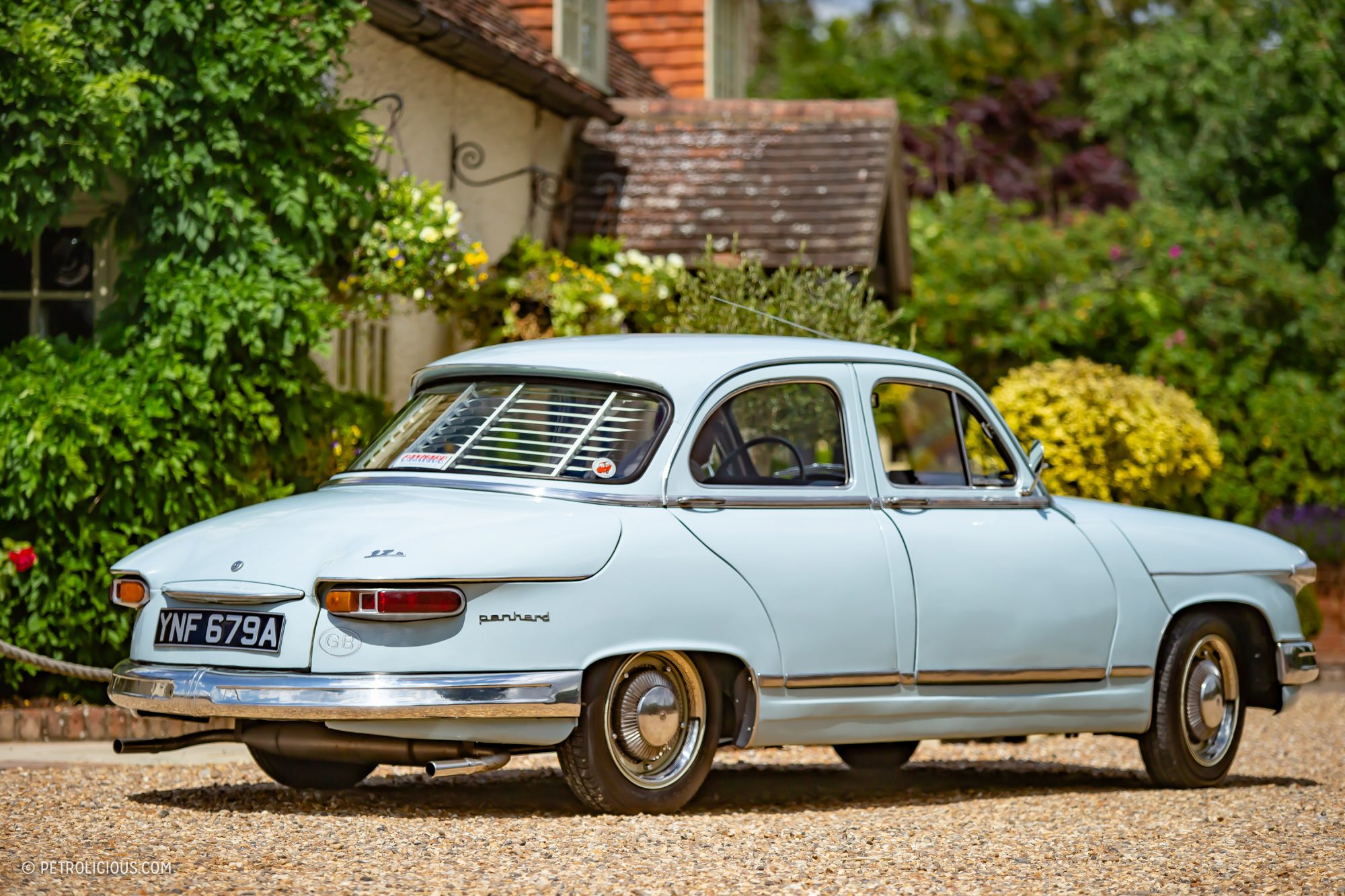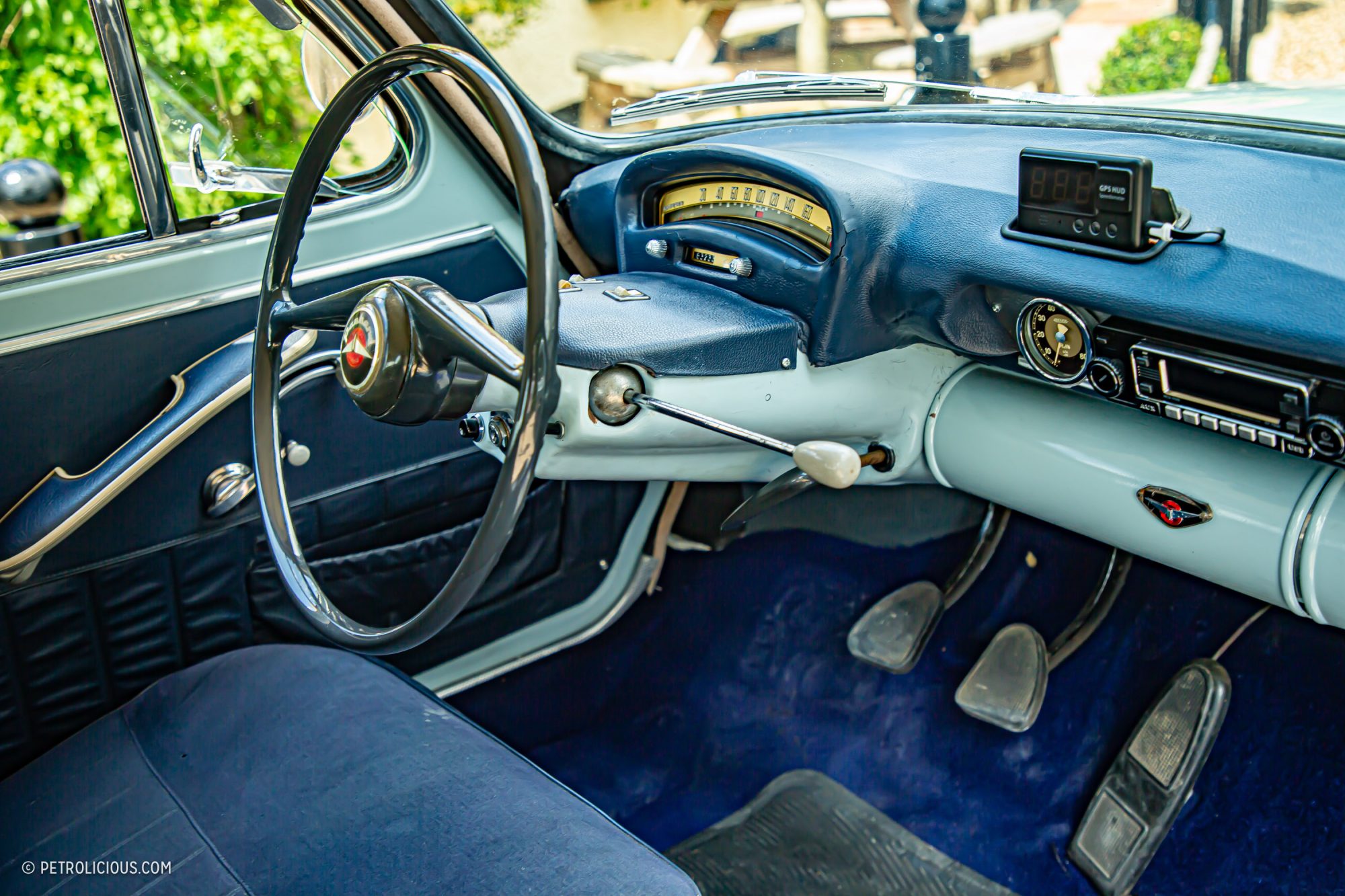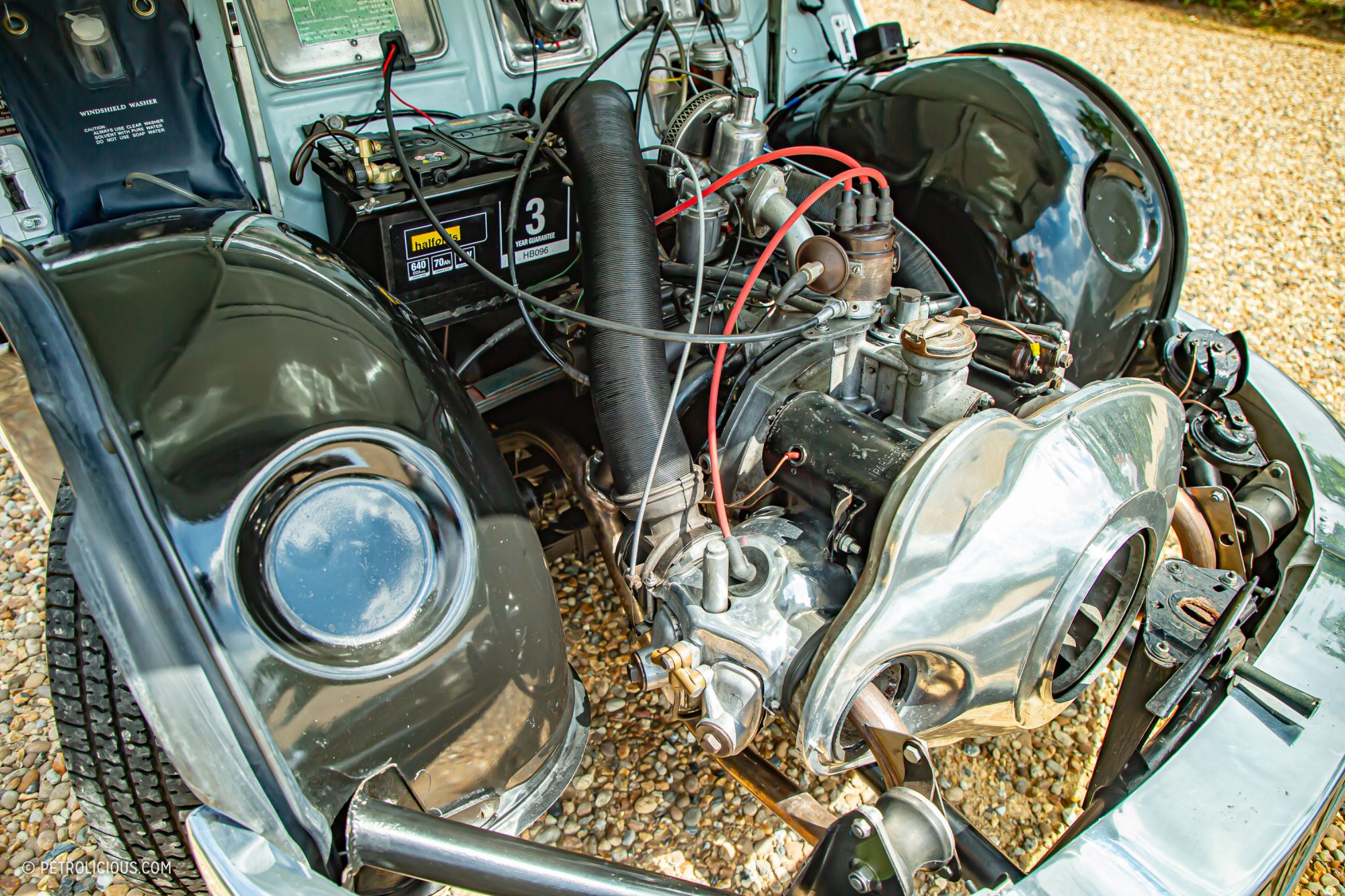
If history had been a bit different, and the French government had offered post-war assistance to more auto companies than just Renault, Peugeot, and Citroën, the name Panhard might be a lot more familiar. Known for its unconventionally designed cars, but defunct since the 1960s, the brand still enjoys an enthusiast following, made up of stories like John Bellwood’s lovingly restored 1963 PL 17.
Bitten by the “quirky” bug as a teenager, John bought an almost new Panhard 24 CT way back in 1969. “It was grand to drive, and really stood out, as no one else ‘up north’ had one,” he says of his old car in his Yorkshire homeland. But a reputation of less than stellar reliability and dwindling sales meant Panhard had gone out of business a couple of years before, when Citroën had bought the company and ceased production almost immediately. As an unsupported foreign brand, spare parts quickly became very hard to find… “And there wasn’t even a service manual in English!” Needing something easier to maintain, John reluctantly sold his Panhard coupe.
He never forgot the special experience of that car, though. Many years passed, and with the rise of the internet, John began researching French cars again. “Back then, with the modem hooked up to the phone line, photos were very slow to load, and I remember staring at this fuzzy image as the pixels got clearer and clearer, until I could read the number plate—I realized I was looking at my old car!”
He kept an eye on its whereabouts for a few years but sadly missed out on its sale. “Well… I heard that they guy who bought it only drove five miles before the engine blew up,” he says with a shrug. But then in 2014—approaching retirement—he came across an older model on eBay. “Just keeping them running back in the day was hard enough, so I knew that restoring one fifty years later was going to prove a real challenge.” A mechanic by trade, and after a long career as a fleet manager for the national telecom provider, John knew what he was doing in the garage… and so became the owner of a very tatty Panhard PL 17.
With a MIG welder, angle grinder, and a set of spanners, the car—or what was left of it after spending 37 years parked up in a barn in a French village—was wheeled into John’s garden garage. The worst of the rot was caused by the chrome trim along the side being attached to the doors by clips from simple holes drilled through the bodywork. These of course filled with rain water over time, and so all the door bottoms were goners. And the water had found its way into (and eventually, through) the sills underneath as well.
The sheet metal fabrication wasn’t too hard for John, especially as he didn’t have to form the drainage lines in the sills. “It would have been really difficult to get the fold into the metal, a bit beyond my abilities,” he told me. But his metalworking skills were tested by the door hinges. “One door hadn’t been opened in decades, and the hinges had turned to lumps of rust, so when someone had forced the door open they’d ripped them out of the A-pillar and twisted it. It was a right mess.”
Most cars have the door hinges mounted on the normally straight A-pillar, but earlier versions of the PL17 had “suicide” front doors and so were never designed to have them on the A-pillar. “The hinges are mounted right on a curve on the body, and I had the door off ten times before I got it right, as it has to absolutely be perfect. A millimeter off and it won’t work.”
The interior was far too gone for any hope of restoration, as the cloth and foam had sustained many generations of rodents, and John spent many afternoons removing desiccated rat carcasses from interesting places as he stripped out the interior. The donor bench seats and trim came from a higher spec car found in the wilds of mid-Wales. The seats were fine, but he needed to make new door cards himself—the originals proved all but impossible to find. They look perfect now, and that is due in part to a company called Plasticoat, which matched the color for shine and shade and sheen and sent the aerosols. “I can’t tell the difference. They’re just as good as new,” John smiles.
But what really impresses John about this car, and makes it stand out from others, are the mechanicals, particularly the engine. Designed immediately after the war, the remit was to be light, efficient, and economical with minimum internal friction. For the tiny, all-aluminum 610cc air-cooled, twin-cylinder engine to maintain the desired cruising speed of 130 km/h—quite ambitious for 1946—it had to rev at an ear-splitting 8000rpm, which was unheard of at the time.
In 1955 the much larger Panhard Dyna Z was released and to increase the power for the extra weight a whole host of innovations found their way into the now-851cc casing. Torsion bar valve springs were a very clever way to reduce valve float (or “bounce”), hydraulic valve clearance adjustment, ultra lightweight valve train with roller cam followers, hemispherical combustion chambers, and low-friction roller bearings were all integrated into the design. “For those who appreciate old-school engineering, it’s a work of art,” John enthuses.
The face-lifted follow-up—the slightly less cartoonish PL 17—came to the market in 1959, which was (mostly) what John had bought, but it soon became apparent that the engine was from an earlier car, made obvious by the lack of important ancillaries that should have been on a matching-motor PL 17. It also wasn’t in such great condition. “When I drained the engine oil, things were clanking into the draining tin. The pieces were obviously from a collapsed piston skirt, but when I pulled it apart the pistons were perfect, so at some point in the engine’s life, someone had replaced the pistons but left some of the broken bits inside. I checked and rebuilt the engine and it performed well… although I was never entirely happy with it,” he concludes.
Via the Panhard owners club, John found an engine from a PL 17 rather than a Dyna Z, which he rebuilt and modified to the more sprightly Tigre specification. On the previous engine, John had installed an SU carburetor of the type fitted to the original Mini, which was an improvement over the leaky Panhard version, and he wanted a similar setup on this engine… but had a lot of trouble getting it to work properly.
“It was running weak at times and rich at others, and I just couldn’t set it up properly,” he recalls. The only way to find the issue was through a long and laborious process of elimination, but he eventually worked out that the problem was that in putting the carb on an extended inlet tract, the fuel was falling out of the mixture before reaching the combustion cambers. “It was vaporizing fine at the carb, but by the time it got to the engine it was separating again.” Today the correct Zenith 38NDIX twin-choke carburetor is fitted.
But for all this mechanical innovation, on start up it’s still a humorously loud machine, like a WW1 fighter plane. “An air-cooled, twin-pot… there’s no way to make that quiet,” John says with a smile, something he must have repeated fairly often to his neighbors.
After warming it up and going for a short drive, I noted that the suspension was comfortably floaty. At just over 800kg (~1764lbs) the PL 17 is very light compared to modern cars, and as French manufacturers are well known for, it has an odd suspension setup, with a pair of transverse leaf springs mounted close to the bottom of the bulkhead.
Under the bonnet the stereotypical “French car quirkiness” continues. The engine bares an uncanny resemblance to the vacuum cleaner from the Teletubbies, and is actually mounted to the front cross member by means of the exhaust, which although it seems like a melting hazard, John assures me it’s not an issue.
On the road, John gets stares and waves in equal measure, but loves taking this odd car to classic shows and is happy to spend all day chatting about it… and being cautiously optimistic that things will be better this summer, the PL 17 will be about and about in the English sunshine on many a weekend.




























